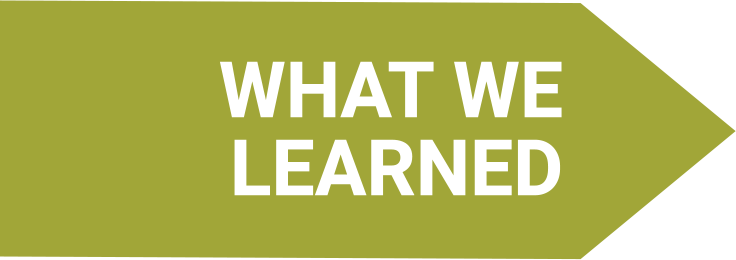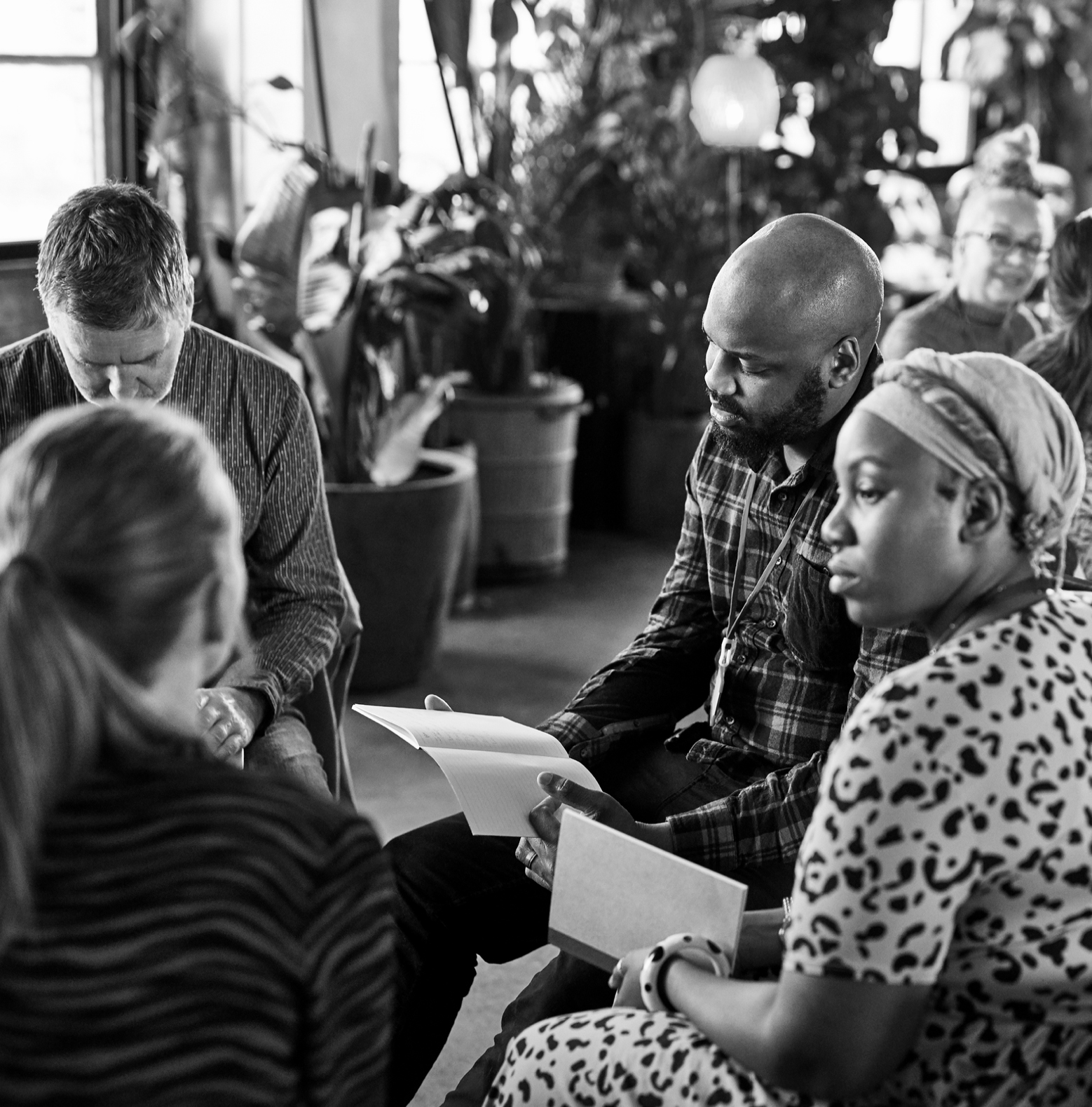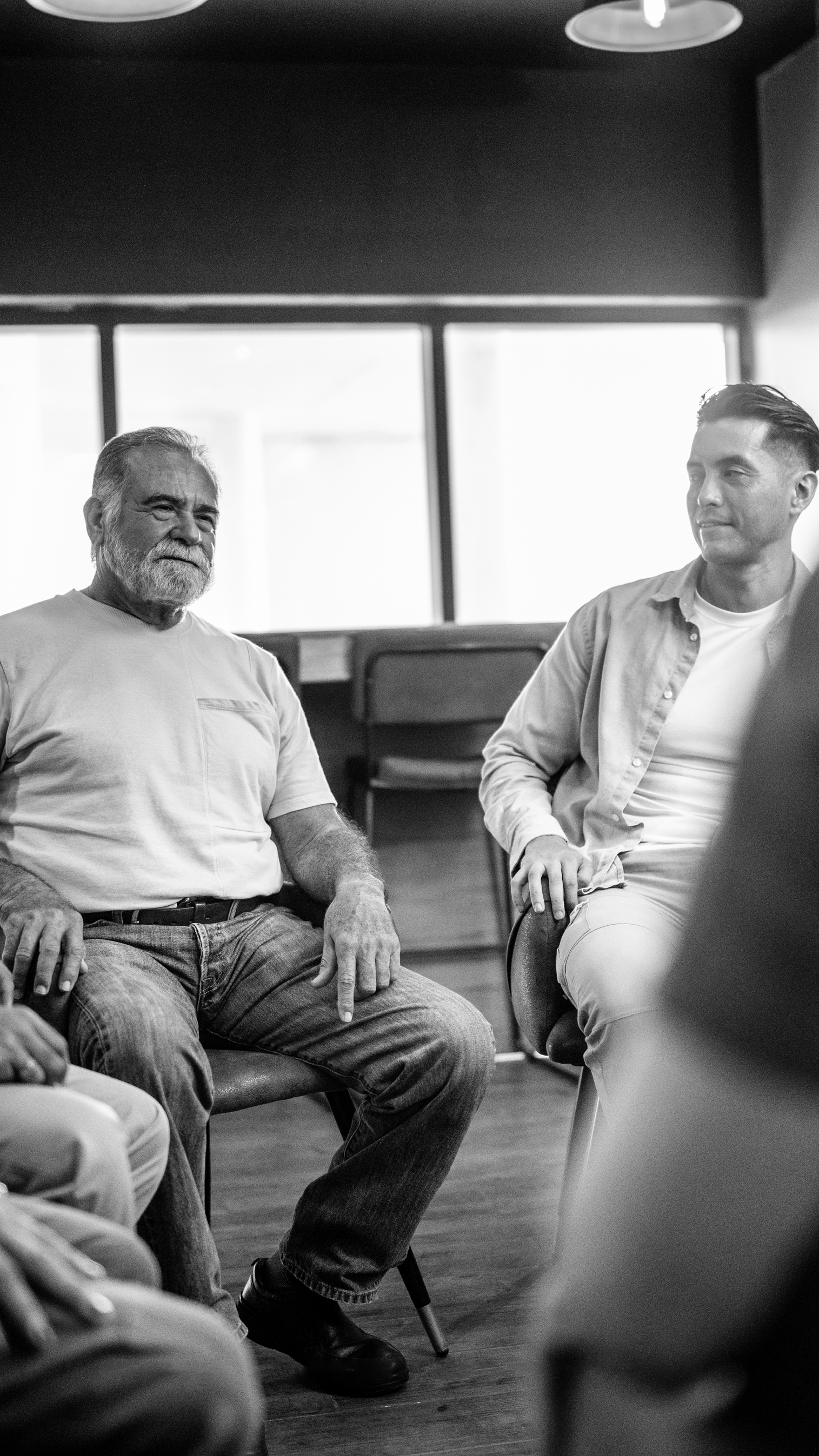

Using Qualitative Research to Understand the Economy: A Toolkit
By Sarah Miller, Ashley Putnam
October 16, 2024
Who is this toolkit for?
This toolkit is for researchers, policymakers, employers, and workforce organizations interested in engaging directly with the populations they serve to elevate those populations’ perspectives in policy, programming, and practice.
What is in this toolkit?
The Federal Reserve’s Worker Voices Project offers lessons and insights into using community-engaged qualitative research practices. This toolkit shows how others can employ these principles in their own community impact assessments and research.

The Worker Voices Project: Background
What was the aim of this project?
To promote a strong economy and maximum employment, the Federal Reserve carries out research that sheds light on labor market conditions. The Worker Voices Project seeks to understand the perspective of workers and job seekers and their experiences navigating the labor market in the recovery from the pandemic.
Who did we hear from in this project?
The project collected insights from workers and job seekers without a four-year college degree. These research participants disproportionately came from lower-wage roles and frontline occupations, and they were likely to have participated in workforce training programs.
How did we conduct this project?
The Federal Reserve System worked with community-based workforce partners to identify a convenience sample of eligible participants. While this sample was not nationally representative, the project ultimately conducted 20 focus groups with 175 workers and job seekers from 33 states across the country, offering a wide range of perspectives on employment experiences.
How did community-engaged research principles guide this project?
The project’s research design was informed by the principles of community-based participatory research, which originated in the public health field (Israel et al. 1998). The project incorporated a few key components from these principles: facilitating collaborative partnerships, promoting co-learning, and finding a balance between research and action that benefits all partners.
What did we learn from this project?
Participants said their experiences during the COVID-19 pandemic shifted their views of employment and changed what they wanted and expected from a job. Many participants said they did not benefit from a strong labor market and increased demand for workers. As a result, many pursued formal and informal training to improve their skills and improve employment outcomes. See the Worker Voices executive summary for details.

The truth to me, what caught my attention is the title, “The Voice of the Worker,” because on few occasions the voice of the worker is heard; normally the voice of the companies, of the large companies, of the losses that these companies are having and not the worker himself, who is the one who makes those companies grow.
— Worker Voices Participant
Community-Engaged Qualitative Research to Understand Economic Experiences
Why this method?
In the recovery from the pandemic in 2021–2022, labor market data revealed that many individuals were hesitant to return to the job market. To understand the motivation beyond these numbers, we spoke with workers and job seekers directly, which gave us an opportunity to grasp the real challenges facing them.
What it adds
Qualitative research methods allowed participants to share the depth, breadth, and nuance of their lived experiences that are absent from numeric data alone. The firsthand information collected provided important insights into conditions and expectations in the labor market.
Value to Economic conversations
This method allowed researchers to answer questions quantitative data cannot about
how individuals shaped their priorities and decisions around work. The approach, in
turn, allowed participants to shape the narrative around worker experiences and shape
conversations about the economy more broadly. Finally, these qualitative approaches
allow researchers and policymakers to have a greater understanding of workers’
experiences that economic data alone did not capture.


Just as the macroeconomy is
a combination of many diverse
smaller economies, the labor
market is the product of millions of
interactions among employees and
employers. To understand workers’
experiences, we talk to real people.
— President Raphael Bostic, Federal Reserve Bank of Atlanta

For us as policymakers, the soft
data provided by Worker Voices
are equally important as, if not
perhaps even more important
than, numbers-driven hard data
in getting a full understanding of
our economic situation.
— President Patrick Harker, Federal Reserve Bank of Philadelphia
Navigating the Toolkit


Scoping the Project
Overview of the Approach and Chosen Methods

Reviewed Literature
- The project started with a review of existing research on workers’ experiences in the labor market at the onset of the pandemic and into the early economic recovery. Finding that most research was focused on office roles and the experiences of college-educated workers, the structure and context of this project aimed to supplement the existing body of research with the experiences and motivations of workers without a bachelor’s degree to provide broader economic context in a post-pandemic labor market.
Sought Research Guidance
- We formed an advisory group to guide the development of the project scope, engagement and question design, and value of research. The advisory group, which included experts both internal and external to the Federal Reserve, considered question design, facilitation neutrality, the value of insights to Federal Reserve analysis, and practical applications of data findings in the workforce development field.
Selected Research Methods
- To best get to the “why” behind the economic data, a qualitative research approach was necessary. To speak to a critical mass of workers and job seekers, and to make the conversations as accessible as possible, virtual and evening hours focus groups were the chosen method for conducting this qualitative research. This approach allowed us to engage the maximum number of participants, as opposed to relying on one-to-one interviews.
Engaged Qualitative Experts
- Experienced qualitative researchers helped shape the project design and offered guidance on effective data coding and analysis. The research team engaged in qualitative research training to ensure data were collected, coded, and analyzed in a rigorous and unbiased manner.

Project Management and Time
- This process required time, input, and intentionality around what community-engaged research principles would drive project design and inform decisions about which qualitative methods we chose to use in this project. We learned that planning takes more time than originally anticipated and requires a broader set of project managers to help effectively implement those plans.
Benefits of Focus Groups
- Focus groups allowed for nuanced and rich discussions among the participants and provided researchers answers to their “why” questions that traditional labor market data or surveys could not. Focus groups also benefited participants by creating a sense of commonality in experience, and participants were able to build off others’ comments and, in some cases, share resources.
Challenges of This Approach
- Significant staffing was required to manage relationships with community partners, communicate and coordinate with research participants to manage scheduling, and manage facilitation and data processing for each focus group. We learned that for each focus group, about half of those confirmed would attend each session, so we needed to over-enroll for each session to retain a manageable but critical mass of people for each conversation.


Take Time to Consider What You Want to Know
- Determine the gap in your knowledge and design questions to help fill that gap. Assess what you’re trying to better understand and for what purpose. Review what research exists and how qualitative research can add value to that body of work.
Determine What Research Method Best Fits Your Needs
- Depending on the nature of your questions (i.e., how specific and potentially sensitive they are) and the level of comfort and trust you have with participants, one approach may be better than another.
- For example, a survey may offer greater anonymity and yield more honest responses. Structured and one-to-one interviews can allow for more depth on a topic from a single participant. Focus groups can offer greater discussion among participants, but they will also require adept facilitation skills.
Leverage Experts in the Field
- Working with experts in qualitative research can help you determine your project design and identify any potential problems with that design. Seek advice from others who have conducted similar research or academics who can provide guidance and training to your team.



[I] joined this group tonight to just really touch base and get more info to what I can do and what kind of information I can give to help others in a situation like that.

I joined this call today to share my ideas, to share everything I’ve gone through … because I really want to share a lot of things with you.
— Worker Voices Participants
Designing the Conversation
Vetting Questions and Engagement Process

Tested Questions with Potential Participants
- To ensure we were framing questions in ways that were understandable and free of bias, we vetted questions with participants in one-to-one interviews.
- We interviewed five selected participants in the target
population to ensure questions were clear. We asked
interviewees to consider the intent of the question and
to reframe it in their own words to improve question
clarity. We wanted to be sure the language we were
using was correct and reflected how participants might
describe their experiences. - These interviews helped us identify ways our language
was unclear, might have implicit stigma, or would
bias participant answers.
Gathered Feedback on Process Through Pilot Focus Group
- Beyond testing questions, we used these interviews to get feedback on the user experience from indicating interest in participation, filling out an intake survey, and logging onto the Zoom session.
- We also hosted a pilot focus group to test the flow of the conversation, as well as communication and logistics for the conversation.


Language Matters
- Language is important in designing qualitative research. The words we use matter, and ensuring those words are clear and accurate to lived experiences helped get the best response. For example, the phrase “gig work” meant different things to different people. We asked directly about online-platform-based work by name to ensure clarity.
Bias Shows Up in Different Ways
- Interviews helped us challenge assumptions behind questions and ensure question neutrality. In some questions, the frame assumed certain factors were being realized for participants navigating the labor market, i.e., workers were benefiting from reduced degree requirements in job posts; we learned that this was a leading question and adjusted our frame accordingly. We changed the question frame from, “How are you benefiting from employer practices?” to “How are you experiencing changes employers are making in their hiring practices?”
- Some topics, like unemployment insurance, carry stigma on their own. We worked with participants and external experts to frame language in a way that did not reinforce negative narratives. For example, as opposed to asking, “Who received unemployment insurance and what was the effect of these dollars?” we asked if participants found that “stimulus or unemployment insurance impacted their decisions around work and if so, how?”
Process Clarity is Important
- Participant interviews also helped us improve the user experience by highlighting places where our instructional language was unclear. We adjusted invitation language as well as guidance for participants as to how to join the call, as well as post-session actions to locate gift cards and get in contact with project leads.

When Designing Surveys or Qualitative Research, Get User Experience Feedback
- Getting feedback can inform the full process, from the framing of the questions to the language used for recruitment.
Don’t Assume Your Questions are Free of Bias
- We all apply a lens created by our own experiences and knowledge into how we frame questions. By piloting your questions with representative focus group participants, you can validate that the language you use in questions is not reinforcing stigma or altering the responses you are eliciting.
Ask Individuals, “How Would You Say That?”
- Use language that is accessible and clear and reflects how participants articulate their experiences.
Consider Running a Pilot Focus Group or Interviews
- Testing your questions and the structure of a focus group allows you to get feedback on the flow of the conversation and a feel for how participants are interpreting questions.

Recruiting and Partnerships
Building Trust with Partners and Communities

Leveraged Existing Partnerships
- We chose a convenience sampling model, working with workforce organizations to connect us to the target population. We worked through trusted local Federal Reserve staff to do initial outreach to referring agencies. The people who led communication were closest to that community’s work and had connections with those partners.
- This approach helped build trust by working through a trusted organization through which the participant had existing relationships.
Created Intake Survey for Participation
- The target population for this research were nondegree-holding prime-age workers or job seekers. We created an intake survey that ensured participants met qualifying criteria, as well as collected demographics and other background characteristics.
Reinforce Informed Consent
- Informed consent was clear, concise, and easy to understand and allowed participants to opt out of the research engagement at any time.
- We reinforced what questions would be asked, what data would be collected, and how those data would and would not be used during every touchpoint with the participants.
- This intentionality around where participants could opt-in or opt-out of all parts of the process created a sense of safety and trust among the participants, which allowed for more candid and honest conversations.


Plan for Participation Drop-Off
- Participation drop-off occurs at every step of the process. Only a portion of those who received the invitation to participate completed screening questionnaires. Participation then dropped off by an average of 50 percent from the invitation of those who cleared the screening to the engagement in the focus groups. We then needed to over-recruit in some instances to ensure enough participation in each focus group.
Trust is Crucial
- Relationships with community partners and, through those relationships, with the research participants who community partners referred, move at the speed of trust. Any lack of trust among the participants or the intermediaries about what questions we’ll ask or how we will use the data and for what purpose will negatively affect engagement.
Intentional Outreach is Necessary
- To reach individuals who are typically more hesitant to participate in conversations with the Federal Reserve, we needed to be intentional about our partnerships. Reaching Native, immigrant, and formerly incarcerated populations required more advance planning and partnerships with organizations doing work in those communities.

Identify Partners for Recruitment
- Work with organizations that are already serving the types of research participants you want to reach; this allows for more control than using public forums to recruit participants.
- For example, if your objective is to understand the experiences of a specific population, such as residents of a certain neighborhood or parents of young children or workers in a particular occupation, then a more targeted approach to recruiting participants would be warranted.
Be Transparent and Responsive to Partner Organizations to Build and Maintain Trust
- Assess what actions you could take to build the necessary trust and create shared agreements on how engagement will be conducted, how data will be used, and what data will be shared. Seek out relationships with organizations that have the trust of the target population.
Be Clear with the Research Participants on Confidentiality
- Ensure research participants understand what you are asking of them and how their information will and will not be used.
- These actions will develop trust with participants who may or may not be familiar with your organization or the purpose of your research or engagement. Explain how you will protect their confidentiality.
Creating the Space
Confidentiality and Trauma-Informed Facilitation

Used Expert Facilitators
- We identified external facilitators with a background in community-engaged research and experience facilitating discussion on sensitive and difficult subjects, ensuring questions did not unnecessarily traumatize, or retraumatize, participants.
- We approached this project with a trauma-informed lens that shaped how we asked questions and empathetically listened to participants’ accounts of their experiences of being frontline workers during the pandemic.
Set Norms for the Conversation
- The focus groups were opened by establishing conversation expectations and ground rules. For example, this included fostering a sense of safety for participants, reminding participants to respect one another’s confidentiality, and restating informed consent and participants’ ability to opt out of questions as they saw fit.
Create a Safe Space
- Only critical staff from the project and facilitation team were invited to each session as to not overwhelm participants with additional listeners during the discussion.
- We created a script with intentional language for facilitators, which included messages acknowledging that hard experiences were shared by participants, particularly as some of the experiences shared were so personal, and in some cases, traumatic.

Openness of Participants
- Most people were much more willing than we had anticipated to share details about challenging topics, including discussions around immigration status and exploitation in the workplace.
Trauma-Informed Facilitation
- We needed to consider the sensitivity of the questions, given the amount of trauma individuals experienced in the pandemic, from job loss to illness to loss of loved ones. We adjusted question protocol and scripts as needed.
- The scripts used for each session gave facilitators tools to acknowledge hardship experiences participants shared at the outset and close of each conversation. That said, we learned that we needed to show up as empathetic human beings first and foremost. For example, empowering facilitators to reflect during the session to offer sympathies, to apologize for challenging situations participants lived through, and to thank them for candidly sharing these experiences was important.
Focus Groups as Community Building
- Participants found solidarity and community in focus group settings, often sharing how they felt validated being heard by and sharing with others. The safe space created also allowed individuals to share resources, often dropping links in the chat for programs or even contact information.


Open Each Meeting Establishing the Privacy of the Conversation
- Explain the purpose of the project and that all answers are voluntary so participants do not feel pressured to share experiences that they want to remain private. Ask others to keep the comments shared in that space private.
Consider the Ways Participants May Have Experienced Trauma and How That Trauma May Impact Them
- Make space for people to choose to participate or not, depending on their level of comfort.
- Acknowledge that trauma impacts emotional and physical well-being and that some questions may cause discomfort, even if that is not the intent.
Establish Norms for the Conversation That All Participants Agree To
- These may include things like defer judgment, do not interrupt one another, and pass the mic so that all participants get a chance to answer questions. These norms help establish the feel of the conversation and how participants will treat one another.
Be Mindful of the Balance in the Conversation
- Recognize where there may be intimidation factors affecting participants’ interest and comfort in engaging in the conversation, and adjust accordingly. Only have critical people involved in the information gathering to avoid making participants feel they are “on stage” to share their experiences or perspectives.
Hire Facilitators Trained in Community-Engaged Research or Trauma-Informed Facilitation
- They have experience creating a safe and supportive environment for individuals who might have experienced trauma in the past.
- Acknowledge and thank participants who choose to disclose an experience that may have been traumatic. Most important, be human and make space for the humanity of all participants.


[I appreciated] being able to network with other people who may
have different resources about what happened during COVID. …
We all lost some family members. So, it’s just good to see that,
you know, some positivity is being born from such a tragedy that
affected all of our lives.
— Worker Voices Participant
Exchanging Value
Intentional Partnerships and Sharing Insights

Sharing Outputs With Community Partners
- We shared real-time themes from the focus groups with community workforce providers and partners. These organizations were able to use these themes to better understand the lived experiences of workers and job seekers without college degrees.
- Regional Reserve Banks used data to engage with community partners on insights from workers and job seekers in their areas.
Valuing the Research Participants
- All participants were paid for their time and for sharing their expertise and lived experiences and acknowledged for their partnership in this research in the published reports.
- Before publishing findings, we engaged a select group of participants to validate findings and confirm the language and terms used in research to describe their experiences. These participants were compensated for their additional time and feedback.


Partnership is a Two-Way Street
- We asked a lot of our community partners with respect to support for recruitment, leveraging the trust their endorsement of this research would lend to garner participant engagement, and found that we could provide our community partners with value in return. The themes shared with community partners offered meaningful real-time insights and showed how participants were willing to provide their expertise to speak of their experiences in meaningful and respectful ways.
Participants Value in Sharing Their Experiences and Shaping the Research Findings
- Through the focus group experience, participants noted that they are rarely asked to share their point of view and found value in being asked about their experiences and offered a space to share their personal perspectives.
- We recognized that focus group participants were valuable interpreters and validators of the findings, which strengthened the research output. We reviewed data analysis findings before publishing the research to confirm their experiences were accurately described and allowed them space to reflect on language used in the publication. For example, participants shared their preference for being referred to as “workers in low-wage roles” as opposed to “low-wage workers” and preference for terms like “perseverance” over “resilience” in how their actions were described in the research.



Consider How to Compensate Participants
- Weigh whether, how, and to what level you should compensate community-based participants for their expertise and the time they spend to offer insights for your purpose of engagement.
Share Findings Along the Way With Partner Organizations, Community Participants, and Other Stakeholders
- Ensure participants have the opportunity to digest and reflect on the findings and provide feedback.
- Show how you’ve incorporated comments into a workplan, strategy, program, or final report so that they see their time was meaningfully spent.
Demonstrate How You Incorporated Information Participants Shared
- Use insights gained from these engagements in your decision-making process for your organization.
- Communicate to participants that their perspectives and experiences contribute to real impacts on your organizational strategies, programs, or policies that you work on.
- Showing these impacts builds confidence and helps garner interest from these participants to stay connected for future collaboration.

I use the term ‘persevere’ a lot. Speaking for myself — not to, like, have like a sob story — but I do believe that I’ve overcome a lot of obstacles, and, like, the term that I always use when I’m going through
something is, ‘I’ll persevere.’
— Worker Voices Participant

I think low-wage worker sounds a bit degrading. It’s like, how can I be low if I’m working?
— Worker Voices Participant

This is a platform where every worker has been able to come and air their views.
They’ve been able to say that is stopping them and what can be done to improve the situations on the ground.
— Worker Voices Participant
Resources
Resources for Community-Engaged Research
Community Engagement Resource Center provides training, tools, and technical assistance on community engagement and participatory methods
Community Engagement Resource Center | Urban Institute
Promising Practices guide and facilitation guide for community-based participatory research and community-engaged research
Promising Practices (engageforequity.org)
A Participatory Action Research Field Guide from The Healthy Neighborhoods Study
PAR-Field-Guide.pdf (clf.org)
Understanding Trauma-Informed Facilitation: Community Conversations as Nonprofit Leaders
Trauma-Informed Facilitation (nonprofit learning lab)
A Trauma-Informed Approach to Workforce (provided for the National Fund for Workforce Solutions by the Corporation for a Skilled Workforce)
A-Trauma-Informed-Approach-to-Workforce.pdf (skilledwork.org)
Worker Voices Research
Shifting Perspectives and Expectations on Employment
Special Brief: Perspectives on Job Quality
Special Brief: Barriers to Employment
Special Brief: Pursuing Advancement through Personal Investment
Special Brief: Self-Employment, Dreams Versus Reality
Methodology, Demographics, Facilitation Questions | Worker Voices





